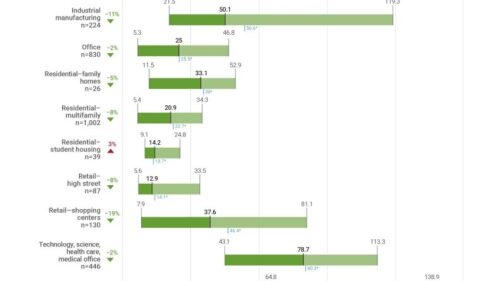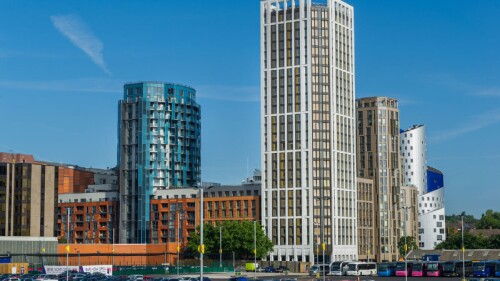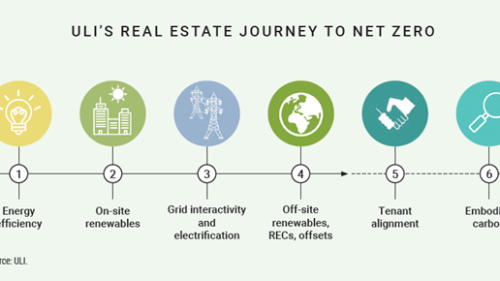Resilience and Sustainability
On January 10, ULI Washington convened its second annual “Future Forum: Preparing for the Big Pivot—Building Our Future Around the Innovation Economy” event at the Johns Hopkins University Bloomberg Center. The all-day gathering, attended by more than 200 ULI members, featured insights from industry leaders and participants to address the future of the Metropolitan Washington Region.
Despite economic and political uncertainties, a host of market pressures—such as growing connections between sustainability and financial performance, increasing regulations, extreme weather events, and the importance of health and social equity—are driving real estate companies to prioritize sustainability like never before.
Experts speaking in December at a panel discussion at the COP28 climate summit in Dubai pointed to two ways in which the industry is already improving its environmental performance: first, by renovating more, and second, by using building materials with more recycled content.
Each year since 2009, ULI Greenprint members have reported their asset-level operational energy, water, waste, and carbon performance data to be included in the State of Greenreport. For the first time this year, ULI Greenprint piloted the voluntary submission of embodied carbon data from recent development projects to State of Green, Volume 14. This data is an important step in encouraging real estate to measure and reduce its embodied carbon emissions as the industry progresses toward net zero.
ULI’s new report shares promising examples of efforts to reconnect communities divided by highway infrastructure.
The Intergovernmental Panel on Climate Change has estimated that the industry needs to increase the number of renovations by a factor of 5 to 10 to reduce the amount of carbon being emitted from new construction.
Regulatory environment among the barriers to more adoption of modular construction techniques in Europe.
The transition to net zero will usher in tremendous potential for transformation within economic, environmental, and social realms. These shifts have the potential to generate significant wealth, improve health, and bolster climate resilience. If these changes are managed carefully, decarbonization can help dismantle social inequalities by prioritizing the needs, experiences, and opportunities of marginalized households. The goal is to ensure everyone benefits from efficient, cost-effective, and healthy buildings and energy systems, access to economic growth, and a regenerative economy.
The 2023 United Nations Climate Change Conference (COP28) is here, and with buildings accounting for 40 percent of global carbon emissions, urban development is a pertinent topic at the United Arab Emirates-hosted conference. COP28 offers a platform for the industry to redefine its contribution to a climate-conscious world, and it provides insight into how to strike a balance between immediate profitability and enduring environmental stewardship.
10 structures showcase the lightweight, carbon-sequestering power of mass timber.







